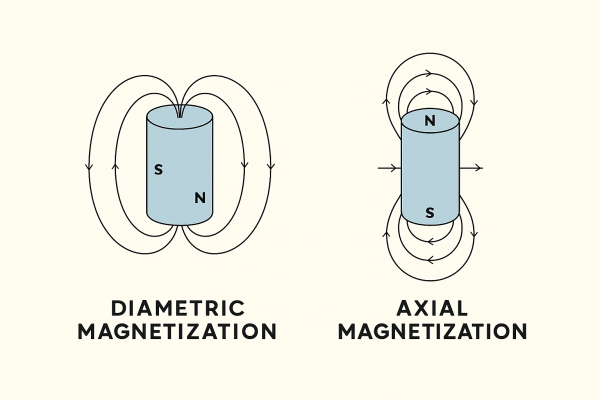Neodymium Magnet Information
-
Building Resilience in an Uncertain Permanent Magnet Market
The global magnet industry is entering a new era. As manufacturing demand rises and geopolitical uncertainty continues to reshape trade flows, companies that depend on permanent magnets face a pressing challenge: ensuring a consistent, cost-effective supply of critical materials. At Apex Magnets, we help businesses navigate the evolving supply chain for neodymium, samarium-cobalt, and other advanced magnetic materials. Here’s what... -
Preparing Your Business for the New Year
As the year comes to a close, many business leaders take time to review performance, reforecast budgets, and prepare for what’s ahead. However, in today’s unpredictable business climate, preparation involves building flexibility, evaluating supplier relationships, and planning strategically for potential disruptions. If you rely on neodymium magnets, here are ways your business can enter the new year with confidence. 1... -
Choosing the Right Neodymium Magnet Shape and Style
Neodymium magnets are among the strongest permanent magnets available, powering a wide range of applications, from electric motors to small devices. But you’ll notice they come in so many shapes and styles — discs, blocks, rings, countersunk, spheres, and more. Why so many? Because the shape and style of a magnet affect its functionality. Selecting the wrong type or improperly... -
Why Are Certain Materials Magnetic?
Magnets are everywhere, from the fridge door to your headphones, but have you ever wondered why certain materials are magnetic while others are not? The answer lies in the structure of atoms and the behavior of their electrons. The Science Behind Magnetism Atoms are made up of protons, neutrons, and electrons. Electrons orbit the nucleus and also “spin.” These tiny... -
Gauss, Pull, and Power: How to Measure the Strength of a Magnet
Magnets are essential tools across industries, from medical device manufacturing to retail display solutions. But when it comes to sourcing or evaluating magnets for your business, one of the most common questions is: How do you measure the strength of a magnet? Understanding this helps ensure you select the right magnet for performance, safety, and efficiency in your operations. Tools... -
The Role of Permanent Magnets in Aircraft Navigation & Control Systems
Permanent magnets in aircraft navigation and control systems support a range of critical technologies, from angle sensing and feedback loops to electric actuators and stabilization systems. Their ability to deliver contactless, wear-resistant, and power-independent magnetic fields makes them a smart choice for environments that demand long life, reliability, and weight efficiency. Here’s how and where permanent magnets are supporting aviation’s... -
What Are Diametric Magnets and When Should You Use Them
While most magnets are magnetized through their length or thickness, diametric magnets are magnetized across their diameter or width, as in diametric blocks. This creates a distinct magnetic field pattern that opens up new possibilities for industrial applications. If you need more help visualizing the difference, view our helpful video about axial vs. diametric magnets here. If you’re working on... -
Huge Rare Earth Magnets: When Does Size Matter?
Occasionally, we’ll check our customer service email and find this query: “Do you have any huge rare earth magnets?” It’s an interesting question. Rare Earth magnets are made from elements that are (as the name suggests) relatively rare. Between the challenges in sourcing the material and logistical challenges of actually manufacturing a Rare Earth magnet, it’s unusual that you would... -
Reprogrammable Magnetic Cilia & Soft Robotics
Magnetic cilia, tiny artificial hairs powered by embedded magnetic particles, have long been used in applications like soft robotics, object transport, and liquid mixing. Now, researchers at North Carolina State University have developed reprogrammable magnetic cilia that can change their behavior at room temperature, opening new possibilities for adaptable, multi-purpose designs. What Makes These Cilia Unique? Traditional magnetic cilia use... -
Magnetic Discovery Driving Change in Quantum Computing
A groundbreaking study from Rice University physicists and international collaborators is reshaping how scientists understand magnetism and electronic behavior in cutting-edge materials—a discovery that could drive advancements in quantum computing and high-temperature superconductors. Led by Rice researchers Zheng Ren and Ming Yi, the team explored thin films of iron-tin (FeSn), finding that this material's magnetic properties come from localized electrons, not the previously assumed mobile electrons. Continue reading →










